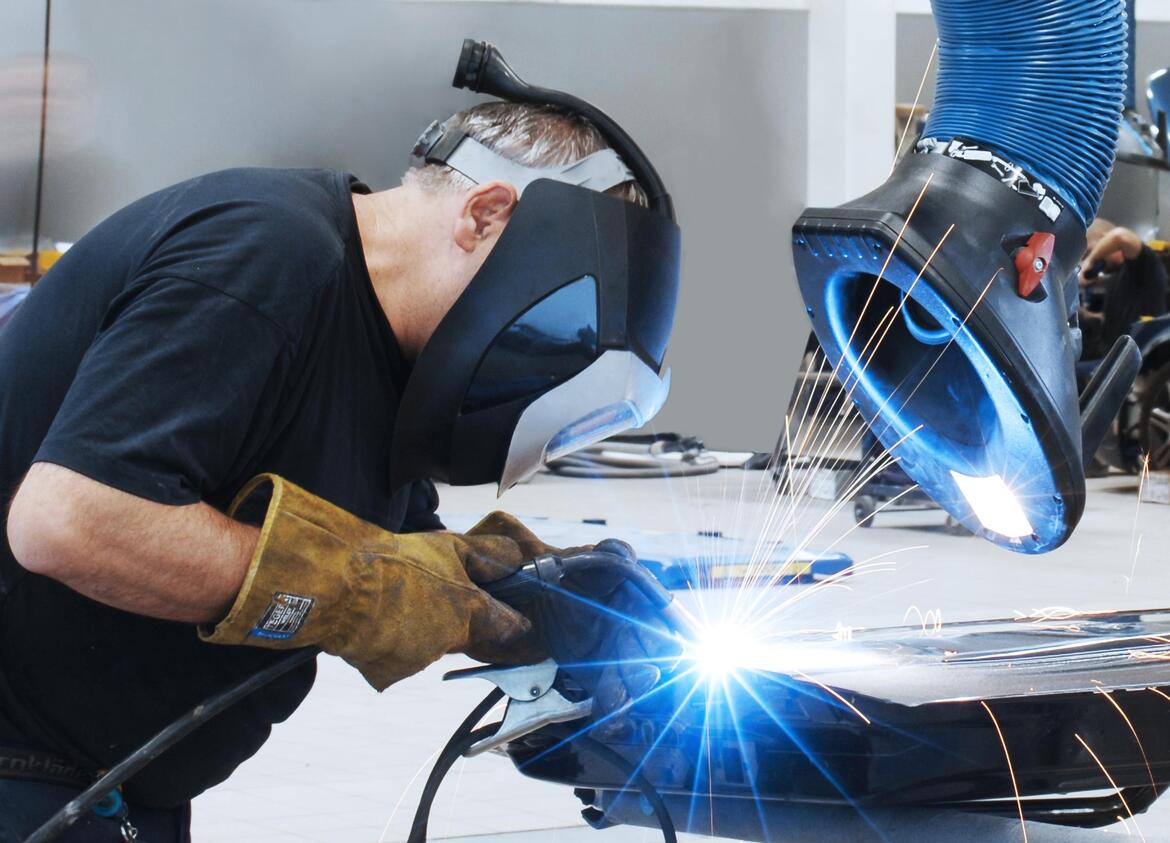
A fume extractor is a system that utilizes a fan using negative draft to pull fumes and dust particles in to a contained filtration system. This process removes hazardous particles from the air. Many industries and processes such as welding, sanding, grinding, spraying and processes involving exhaust fumes need this type of extraction to protect people, machinery and the environment.
The units can be mobile or stationary depending on workplace requirements, and are in many cases installed with a ‘plug and play’ set up meaning there will be no configuration problems. Simply switch it on and point!
Once the unit is installed and switched on simply point the suction head of the extraction arm within a few feet of the fume / dust source and this will suck up the fumes which will go through the filtration process, separating the fumes and dust and releasing the clean air back into the environment. The dust will be collected in a tray which should be emptied at regular intervals to keep the unit working effectively.
Most extraction units have a variety of filters depending on their requirements. These can separate fumes and dust from the normal air particles. Sparks that may be captured (in welding processes) are filtered away from any dust via gravity filters and spark arresters.
The filters the extraction unit uses have a sensor in them that will inform you when they need to be changed. Changing the filters is a process that typically needs to be done within a twelve month time frame for the equipment to maintain full capacity. This is an easy process with the instructions to change your dust and fume extractor filter being very simple to follow.
To get the best possible life out of your extraction unit we recommend that you have a routine service. Much like a car you can ensure the best possible working life of your extraction unit by having a service engineer maintain the parts. Nederman have a team of highly skilled service engineers who can perform full services on any extraction system not just Nederman equipment, we also provide a range of spare parts for Nederman equipment as well as our legacy brands.
Health and safety law says that the risks your workers face from hazardous substances including dust and fumes must be assessed and preventative measures must be provided, the most effective measure is Local Exhaust Ventilation (LEV). As soon as LEV equipment is in place an LEV test must be carried out to ensure that the operator is competent in operating the equipment and that the equipment is functioning as expected. This test must then be carried out every 18 months, it’s best to think about the test like an MOT - this test can be carried out by one of the Nederman service team and we can test any equipment not just our own.
We have extensive experience of various challenges in the different industries and our experts are very skilled, helpful and professional. With us, you can feel secure that we take care of you and your needs. You are always welcome to contact us regardless if you have a short question or a more complex and complicated one. A warm welcome to Nederman.
Contact us here